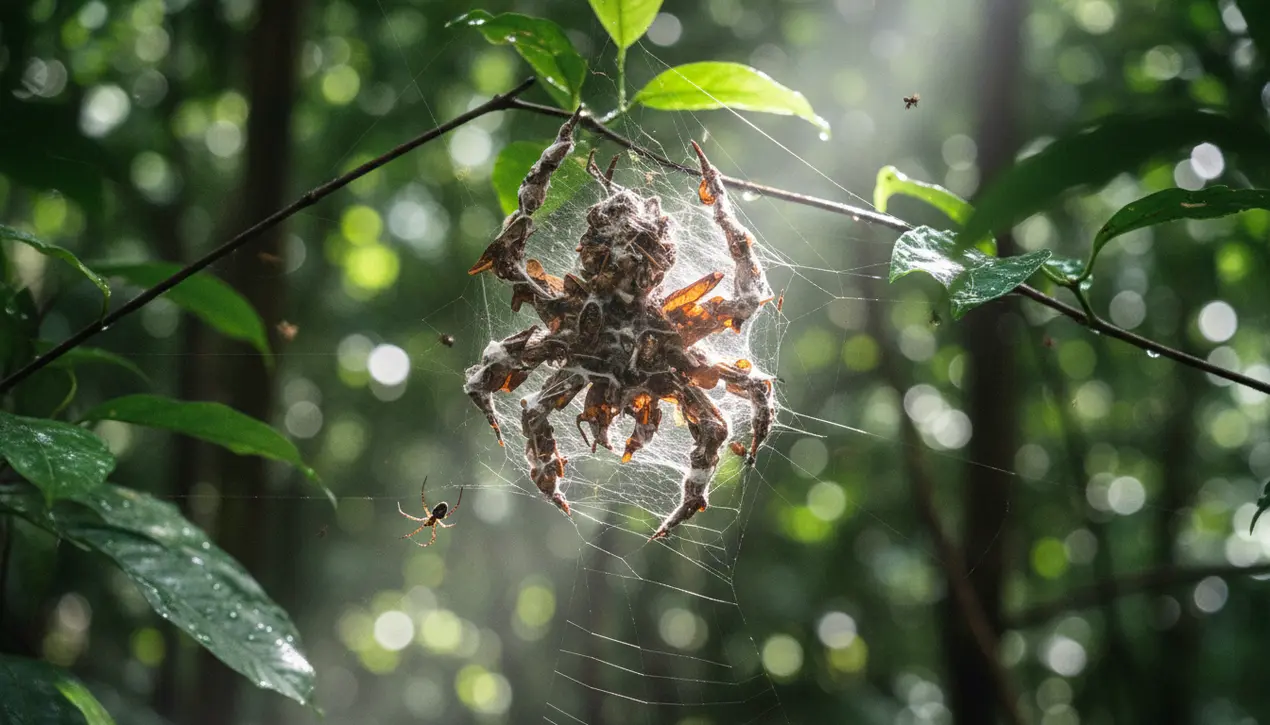
SciencebiologyAnimal Behavior
Tiny Spiders Build Giant Decoys From Prey
RA
Rachel Adams
2 hours ago7 min read2 comments
Deep within the lush, humid canopies of Peru and the Philippines, a remarkable evolutionary arms race is playing out on a miniature scale, where some of the planet's most diminutive arachnids have become master illusionists. The recent study, published in Ecology and Evolution, details the astonishing behavior of these tiny spiders, which meticulously construct elaborate decoys in their webs from a macabre assortment of dead insects, discarded leaf litter, and their own silk.These are not mere debris piles; they are carefully sculpted puppets, engineered to bear an uncanny resemblance to a much larger, and far more intimidating, spider. This is a profound survival strategy, a deliberate act of misdirection in the brutal theater of the jungle.When a potential predator—be it a hungry bird or a predatory wasp—draws near, the real spider, often a species of *Cyrtophora*, retreats and sets the stage for its performance, vibrating the web to bring its monstrous doppelgänger to life. This act of biological puppetry forces us to reconsider the very boundaries of animal cognition and tool use.While many creatures use camouflage, this is active construction, a form of external architecture designed for deception. It echoes the principles of Batesian mimicry, where a harmless species evolves to imitate a dangerous one, but here it is behavioral and structural, not merely morphological.The ecological implications are vast. In these hyper-competitive environments, where every calorie counts, the energy expended in building and maintaining these decoys must be outweighed by a significant survival advantage.Researchers speculate that the primary predators targeted by this ruse are visually-oriented, making the visual fidelity of the decoy paramount. This discovery also raises questions about the spider's sensory world: how does it perceive the necessary form, and is this an inherited, instinctual blueprint or a learned behavior refined over a lifetime? The phenomenon underscores a critical truth often highlighted in conservation biology: that the most extraordinary adaptations can be found in the smallest and most overlooked creatures, and their survival is intrinsically linked to the health of their complex forest habitats, which are increasingly threatened by deforestation and climate change. This is not just a curious anecdote from the field; it is a window into the relentless, creative pressure of natural selection, demonstrating that in the fight for life, sometimes the best defense is a well-crafted ghost.
#featured
#spiders
#decoys
#animal behavior
#biology
#research
#Peru
#Philippines
Stay Informed. Act Smarter.
Get weekly highlights, major headlines, and expert insights — then put your knowledge to work in our live prediction markets.
Related News
Comments
Loading comments...
© 2025 Outpoll Service LTD. All rights reserved.